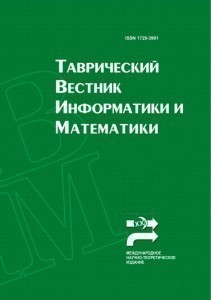A model of motion of a dynamic system with the condition that the trajectory passes through arbitrarily specified points at arbitrarily specified times is constructed. The simulated motion occurs at the expense of the input vector-function, calculated for the first time by the method of indefinite coefficients. The proposed method consists in the formation of the vector function of the trajectory of the system and the input vector function in the form of linear combinations of scalar fractional rational functions with undefined vector coefficients. To change the shape of the trajectory to the specified linear combinations, an exponential function with a variable exponent is introduced as a factor. To determine the vector coefficients, the formed linear combinations are substituted directly into the equations describing the dynamic system and into the specified multipoint conditions. As a result, a linear algebraic system is formed. The resulting algebraic system has coefficients at the desired parameters only matrices included in the Kalman condition of complete controllability of the system, and similar matrices with higher degrees. It is proved that the Kalman condition is sufficient for the solvability of the resulting algebraic system. To form an algebraic system, the properties of finite-dimensional mappings are used: decomposition of spaces into subspaces, projectors into subspaces, semi-inverse operators. For the decidability of the system, the Taylor formula is applied to the main determinant. For the practical use of the proposed method, it is sufficient to solve the obtained algebraic system and use the obtained linear formulas. The conditions for complete controllability of the linear dynamic system are satisfied. To prove this fact, we use the properties of finite-dimensional mappings. They are used in the decomposition of spaces into subspaces, in the construction of projectors into subspaces, in the construction of semi-inverse matrices. The process of using these properties is demonstrated when solving a linear equation with matrix coefficients of different dimensions with two vector unknowns. A condition for the solvability of the linear equation under consideration is obtained, and this condition is equivalent to the Kalman condition. In order to theoretically substantiate the solvability of a linear algebraic system, to determine the sought vector coefficients, the solvability of an equivalent system of linear equations is proved. In this case, algebraic systems arise with the main determinant of the following form: the first few lines are lines of the Wronsky determinant for exponential-fractional-rational functions participating in the construction of the trajectory of motion at the initial moment of time; the next few lines are the lines of the Wronsky determinant for these functions at the second given moment in time, and so on. The number of rows is also related to the Kalman condition - it is the number of matrices in the full rank controllability matrix. Such a determinant for the exponential-fractional-rational functions under consideration is nonzero. The complexity of proving the existence of the trajectory and the input vector function in a given form for the system under consideration is compensated by the simplicity of the practical solution of the problem. Due to the non-uniqueness of the solution to the problem posed, the trajectory of motion can be unstable. It is revealed which components of the desired coefficients are arbitrary and they should be fixed to obtain motion with additional properties.
dynamical system, multipoint motion model, undetermined coefficients method, process implementation.
1. GURMMAN, V. I. (1977) Degenerate Optimal Control Problems. Moscow: Nauka.
2. NELSON, P. U. and PERELSON, A. S (2004) Mathematical analysis of models of the differential equation of HIV-1 infection delay. Moscow: Nauka. Vol. 179 (1). p. 73-94.
3. DORF R. and BISHOP, R. (2002) Modern control systems. Moscow: Basic knowledge laboratory.
4. BARANOV, E.E. (1968) Problems of developing a dynamic model of intersectoral balance. Economy and mathematical methods. Vol. 1. p. 3-26.
5. KRASOVSKY, N. N. (1968) Theory of motion control. Moscow: Nauka.
6. KALMAN, R. E. and FALB, P. and ARBIB, M. (2004) Essays on Mathematical Systems Theory. Moscow: Editorial.
7. KRYLOV, A. N. (1958) Selected Works. Publishing House of Academic Sciences of the USSR.
8. PONTRIAGIN, L. S (1959) Optimal regulation processes. SMS. Vol. 14(1). p. 3-20.
9. KALMAN, R. E. (1960) Comparison theorems for spectra of linear operators and spectral asymptotics. Moscow: IFAC Proceedings. p. 521-546.
10. ZUBOVA, S. P. (2012) Solution of Inverse Problems for Linear Dynamical Systems by the Cascade Method. Doklady Mathematics. 86(3). p. 846-849.
11. ZUBOVA, S. P. (2011) On full controllability criteria of a descriptor system. The polinomial solution of a control problem with checkpoints. Automation and Remote Control. V. 72(1). p. 23-37.
12. Zubova,S.P., Trung,L.H., Raetskaya,E.V. (2008) On polinomial solutions of the linear stationary control system. Automation and Remote Control. V. 69(11). p. 1852-1858.
13. Zubova, S. P., Raetskaya, E. V. (2017) Algoritm to solve linear multipoint problems of control by the method of cascade decomposition. Automation and Remote Control. V. 78(7). p. 1189-1202.
14. KRYTKO, P. D. (1987) Inverse problems of the dynamics of controlled systems. Linear models.. Moscow: Nauka.
15. AILON, A., LANGHOLZ, G. (1986) More on the controllability of linear time-invariant systems. Int. J. Contr. V. 44(4). p. 1161-1176.





